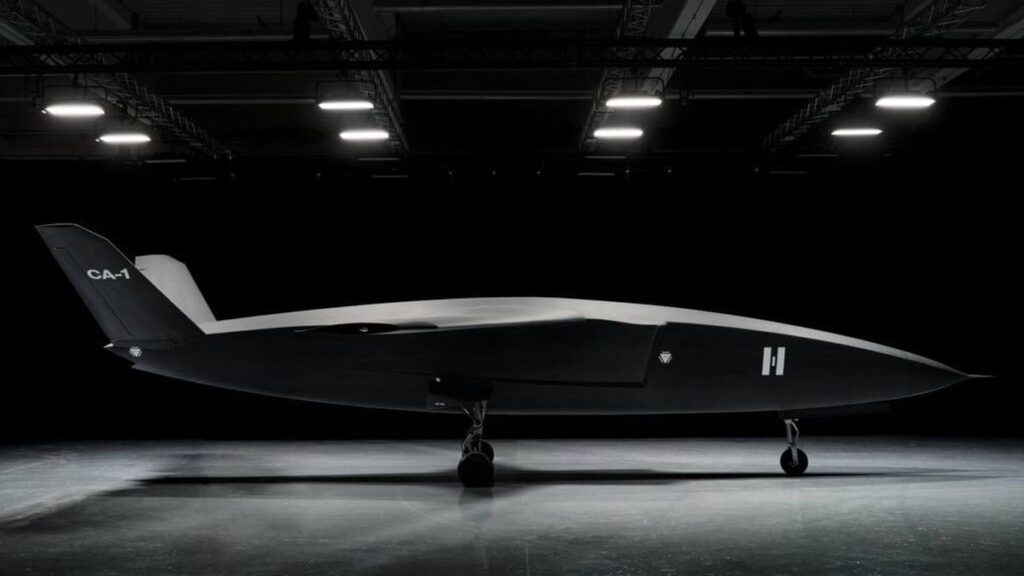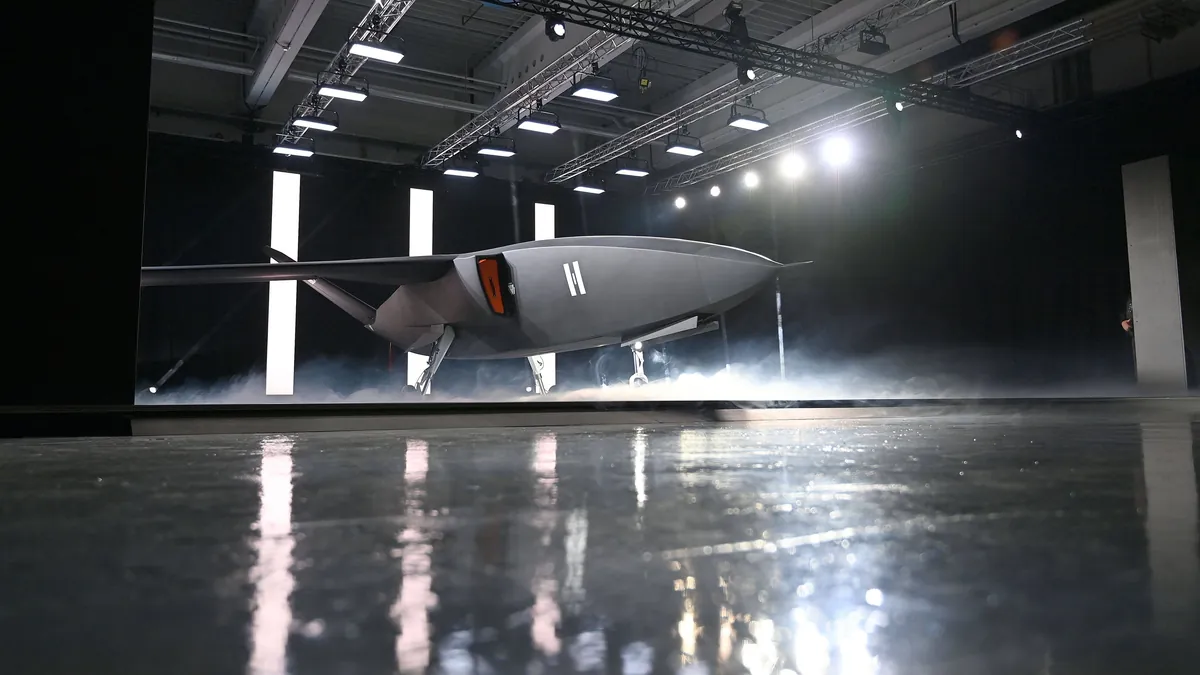Germany officially introduces the latest combat drone namedCA-1 Europathat was developed by the Helsing defense company. The presence of this drone marks Europe's ambitious step toward delivering an autonomous combat air system with the sophistication of artificial intelligence, which is touted to transform the face of modern warfare. A full-scale prototype model has been exhibited at the Grob Aircraft facility in Bavaria, Germany, with plans for its maiden flight in 2027.
This step is not merely the launch of a new military product, but part of a grand strategy to strengthen Europe's technological sovereignty. As global tensions rise, Europe seeks to reduce its dependence on weapons manufacturers from outside the region. The Europa drone is viewed as the answer to the defense needs of the future that require speed, efficiency, and flexibility on the battlefield.
Germany's ambitions in the world of combat drones
Germany's efforts to develop combat drones did not come about overnight. This country has long been known as a major player in the European defense industry, but so far has relied more on multinational cooperation. With the Europa project, Germany wants to directly lead the development of high-tech unmanned aerial systems that are future-oriented.
Helsing, an AI-based defense startup, is behind the design of this drone. The company is known for boldly introducing new solutions in the field of artificial intelligence and military autonomy. With the backing of major investors, including Daniel Ek of Spotify, Helsing aims to put Europe on the global map as a world-class producer of combat drones.
Main Specifications and Design
The Europa drone weighs about 4 tons, with a length of 11 meters and a wingspan of 10 meters. Its design adopts a cranked-kite wing shape with a V-tail, providing aerodynamic stability and a silhouette that is difficult to detect by radar. The side air intake adds a futuristic feel while also supporting engine performance at high subsonic speeds.
In addition to its design, this drone is equipped with an internal weapons bay (internal bay) that enables carrying a variety of weapons. The modular concept makes this system flexible, so it can be equipped with intelligence sensors, electronic warfare equipment, up to precision ammunition. This positions Europa as a versatile platform in the air.
AI and Autonomy on the Battlefield
The main advantage of the Europa drone lies in the integration of artificial intelligence. Helsing buries the system.Centaur AI pilot, autonomous software capable of controlling a drone without direct human involvement. This system is designed to be capable of making mission decisions, navigation, and even organizing swarm formations.
With artificial intelligence, drones can operate in solo mode, pair with a manned aircraft as a wingman, or in a swarm group to control the airspace. This capability reflects the trend of future warfare, in which human–machine collaboration will be the deciding factor in victory.
Production and Implementation Challenges
Although viewed as promising, the Europa drone project faces major challenges. Development of suitable machines, military certification, and large-scale testing will determine long-term success. As of now, Helsing has not announced the machines to be used, and the cost per unit remains undisclosed.
In addition, the success of drones is not only determined by design, but also by their effectiveness in facing electronic warfare. Adversaries such as Russia and China have invested heavily in jamming systems, so drones must prove their ability to survive in real combat environments.
Timeline and Operational Targets
Helsing targets the Europa drone's maiden flight in 2027. If all goes smoothly, this drone is expected to enter service in 2029 or around the early part of the next decade. This schedule is quite ambitious, given the complexity of military testing and certification, which typically takes a long time.
This project will use Grob Aircraft facilities as the production and integration center. With that industrial capacity, Germany hopes to be able to mass-produce drones while keeping the supply chain Europe-based.
Investor and Political Support
Drone Europa is unlikely to be present without significant financial backing. Helsing has successfully raised hundreds of millions of euros, including from Daniel Ek, the founder of Spotify. This investment reflects the belief that the AI-based defense sector will become a strategic frontier in the future.
In addition to investors, political support is also strong. The German government sees this project as a symbol of technological independence. Amid rising international tensions, owning homemade combat drones is considered vital for safeguarding Germany's national security and credibility within NATO.
Global Implications and Changes in Strategy

The launch of the Europa drone has far-reaching implications beyond Germany. The presence of this autonomous aerial system could affect the balance of power in Europe, while also signaling that this region is no longer merely a consumer of military technology, but also a producer.
For other countries, especially NATO allies, Europe's success can open up new opportunities for cooperation. However, for competitors such as Russia or China, this project could trigger a new arms race in the field of combat drones and artificial intelligence.
Expert Reactions and Analysis
Military analysts assess the Europa drone as a significant step forward. However, they also remind us that the prototype's success does not necessarily guarantee an advantage in the field. Logistical factors, the readiness of AI pilots, and interoperability with NATO systems will be the real test.
Furthermore, experts warn about the ethical risks of using autonomous weapons. The extent to which life-and-death decisions can be entrusted to AI remains a global debate. Helsing states that the system still has human control over critical decisions, but skepticism remains strong.
Europe's position on the World Defense Map
If successful, the Europa drone will put Europe on par with the United States, China, and Israel in the development of advanced combat drones. This position is important, given that Europe is often considered to be lagging behind in military innovation. This project simultaneously strengthens Europe's bargaining power in international alliances.
On the other hand, this project can also open up new markets. Many small countries in Europe and Africa may be interested in buying cheaper systems than manned fighter jets. With the right export strategy, the Europa drone could become Germany's strategic commodity.
Ultimately, the launch of the Europa drone from Helsing reflects a major shift in the way Europe views security and defense. This drone is not only about technology, but also a symbol of strategic independence. The future will determine whether this ambitious project succeeds in meeting the challenges of the modern battlefield or merely becomes an ambitious prototype. Readers can follow the latest developments on drone-related issues, military AI, and geopolitics on Insimen to obtain further in-depth analyses.
Discover more from Insimen
Subscribe to get the latest posts sent to your email.










